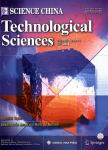Interface adhesion properties characterization of sulfide electrode materials by the combination of BOLS and XPS
Interface adhesion properties characterization of sulfide electrode materials by the combination of BOLS and XPS作者机构:National-Provincial Laboratory of Special Function Thin Film MaterialsXiangtan UniversityXiangtan 411105China School of Information and Electrical EngineeringHunan University of Science and TechnologyXiangtan 411201China
出 版 物:《Science China(Technological Sciences)》 (中国科学(技术科学英文版))
年 卷 期:2022年第65卷第8期
页 面:1798-1807页
核心收录:
学科分类:0808[工学-电气工程] 081704[工学-应用化学] 08[工学] 0817[工学-化学工程与技术] 0805[工学-材料科学与工程(可授工学、理学学位)] 0703[理学-化学] 0702[理学-物理学]
基 金:supported by the National Natural Science Foundation of China (Grant Nos. 11972157 and 11872054) the Natural Science Foundation of Hunan Province (Grant Nos. 2020JJ2026 and 2021JJ30643)。
主 题:sulfide interfacial adhesion properties atomic cohesive energies bond order-length-strength theory X-ray photoelectron spectroscopy
摘 要:Although sulfide electrode materials in lithium battery systems have been intensively investigated due to their low-cost, high theoretical specific capacity, and energy density, there are few studies fousing on the adhesion properties, including the physical origin of hetero-coordination resolved interface relaxation, binding energy and the energetic behavior, and even the accurate quantitative information. In this paper, we present an approach for quantifying the interface adhesion properties of sulfide electrode materials resolved by the combination of bond order-length-strength theory(BOLS) and X-ray photoelectron spectroscopy(XPS), which has enabled clarification of the interface adhesion nature. The results show that the Cu 2p, Fe 2p, and S 2p electrons of Cu S and FeS_(2) compounds shift negatively due to the charge polarization of the conduction electrons of the heteroatoms, while Mo 3d, Sn 3d electrons of Mo S2 and Sn S2 and the C 1 s and S 2p electrons of CS compound shift positively due to the quantum trapping. It is noted that the exact interface adhesion energies of Cu S is 3.42 J m^(-2), which is consistent with the calculation result. The approach can not only clarify the origin of the interface adhesion properties of sulfide electrode materials,but also derive their quantification information from atomistic sites.



